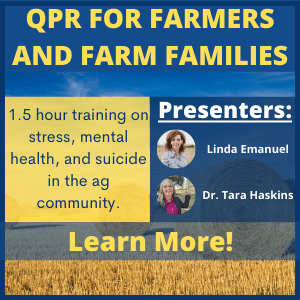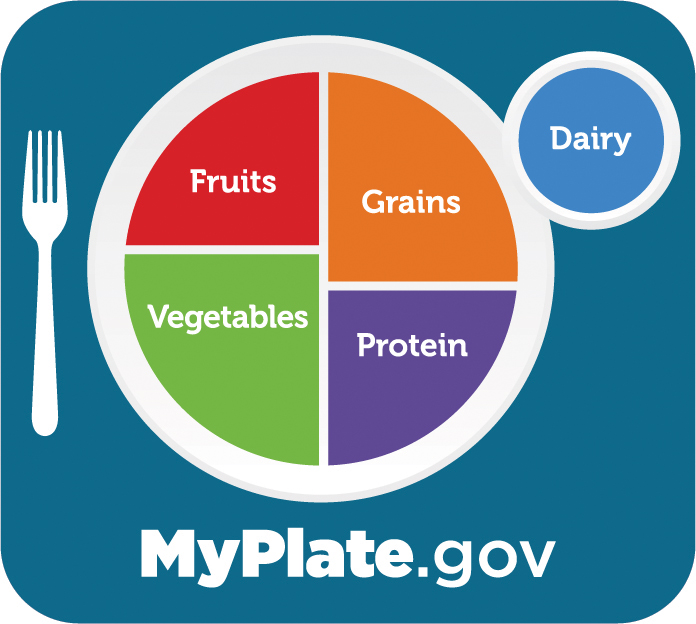Last updated on June 20th, 2024 at 12:20 pm
Diet Resources
Healthy foods fuel your body with the nutrients it needs to perform the physical and mental work to adequately farm and ranch. Consuming healthy food and drink impacts both our physical health and mental health. Physical health impacts include decreasing our risk for diabetes, cardiovascular disease, obesity, and other health related behaviors. Mental health impacts include a better mood, stress management, optimal cognitive function and a lower risk of illness and comorbidities.
The best way to give your body the balanced nutrition it needs is by eating a variety of nutrient-packed foods every day including a mix of lean protein sources. Proteins are part of the processes that fuel your energy and assist in making antibodies to fight off infections and illnesses. Enjoy eating the protein rich foods you have produced in accordance with dietary guidelines.
Healthy eating patterns include a variety of foods across and within all food groups: vegetables, fruits, grains, protein foods, dairy products, and oils. Your body needs protein to stay healthy and work the way it should. Dietary guidelines also allow a treat now and then. These foods are labeled as “calories for other uses”. Recommendations for each food group is dependent on age, sex, and level of physical activity.
Healthy Eating Suggestions:
- Do not skip meals, especially breakfast.
- Quench your thirst with water instead of drinks with added sugars.
- Stay hydrated and drink plenty of water, especially if you are active, an older adult or live or work in hot conditions.
- A portion is the amount of food that you choose to eat for a meal or snack. A serving is a measured amount of food or drink such as a slice of bread. Growing portion sizes are changing what Americans think of as a “normal” portion.
- Fill one half of your plate with colorful fruits and vegetables.
- Eat at least 8 ounces of non-fried fish each week.
- Trim all visible fat from meats before cooking.
- Develop an eating plan that focuses on getting plenty of nutrients to fulfill your caloric needs.
- Celebrate the bounty of your harvest by sharing a meal with family and friends.
Diet Resources
Articles and Blog Posts
Fact Sheets
- Nutrition and Healthy Eating: Are High-Protein Diets Safe for Weight Loss?
- Nutrition and Healthy Eating: Water Is Essential to Good Health. Are You Getting Enough?
Recipes
Webinars
| Webinar Title | Summary | Link |
|---|---|---|
| Food in the Field | With 18+ hour workdays, the stress of the weather, dealing with markets and policies, and limited nutritious, one-handed dining options, it is easy to put healthy eating on the back burner during the busy seasons of harvest and planting. Food in the Field is an online nutrition program seeking to nutritiously feed those who feed us in the field and everywhere in between. This webinar will cover valuable tools to help you plan ahead for the busy seasons as well as research supporting the role of nutrition in mental health and wellbeing. |
Websites
- DASH Eating Plan
- Drinking Water FAQs
- Eat Healthy
- Food in the Field from the University of Nebraska Extension
- Rough Up Your Diet
- Smart Food Choices for Healthy Aging
Page updated: July 2021





